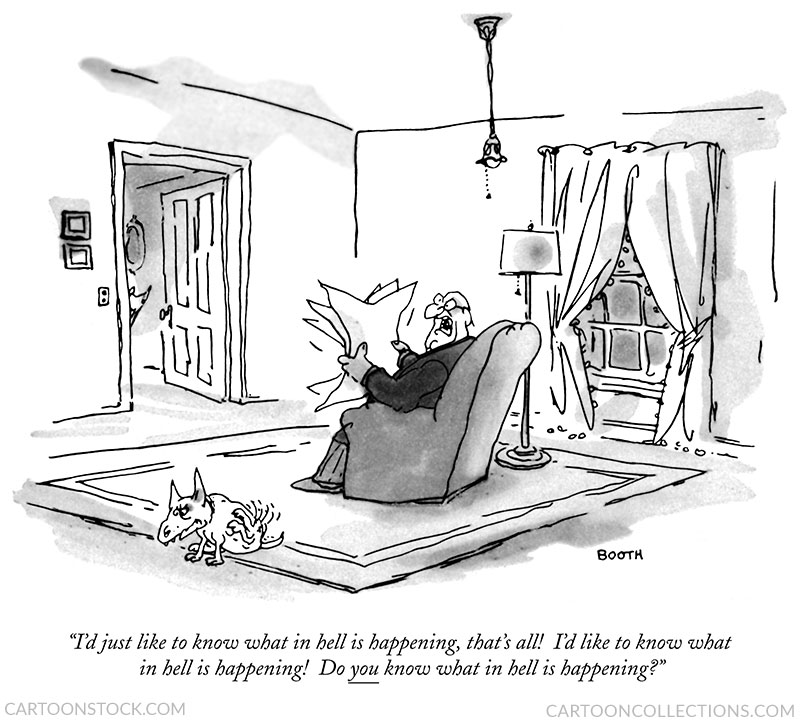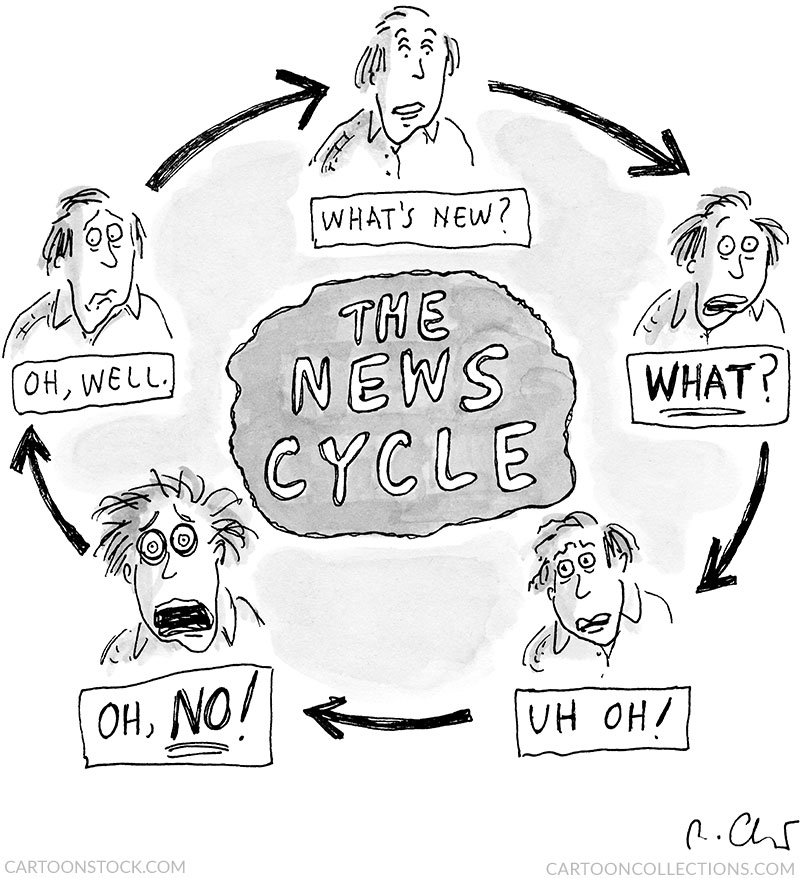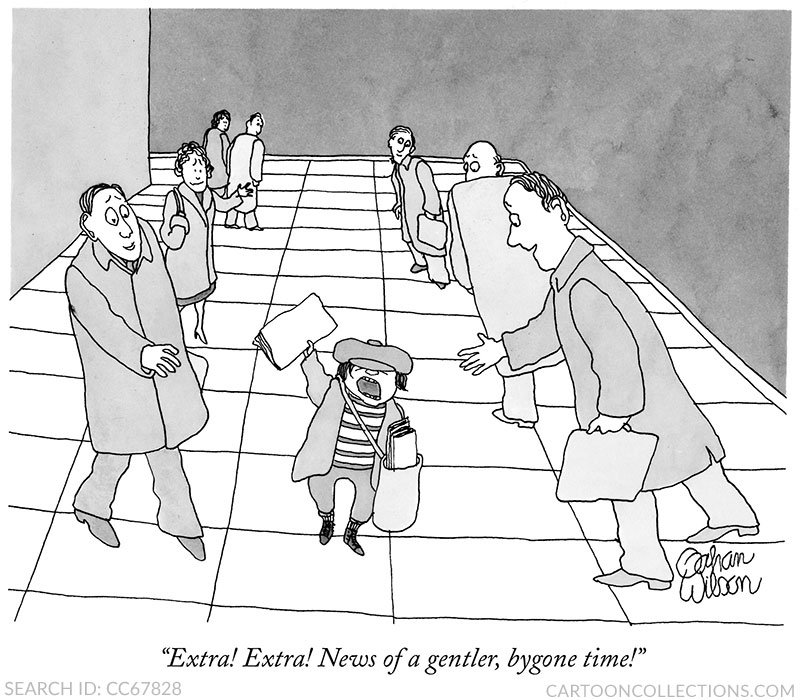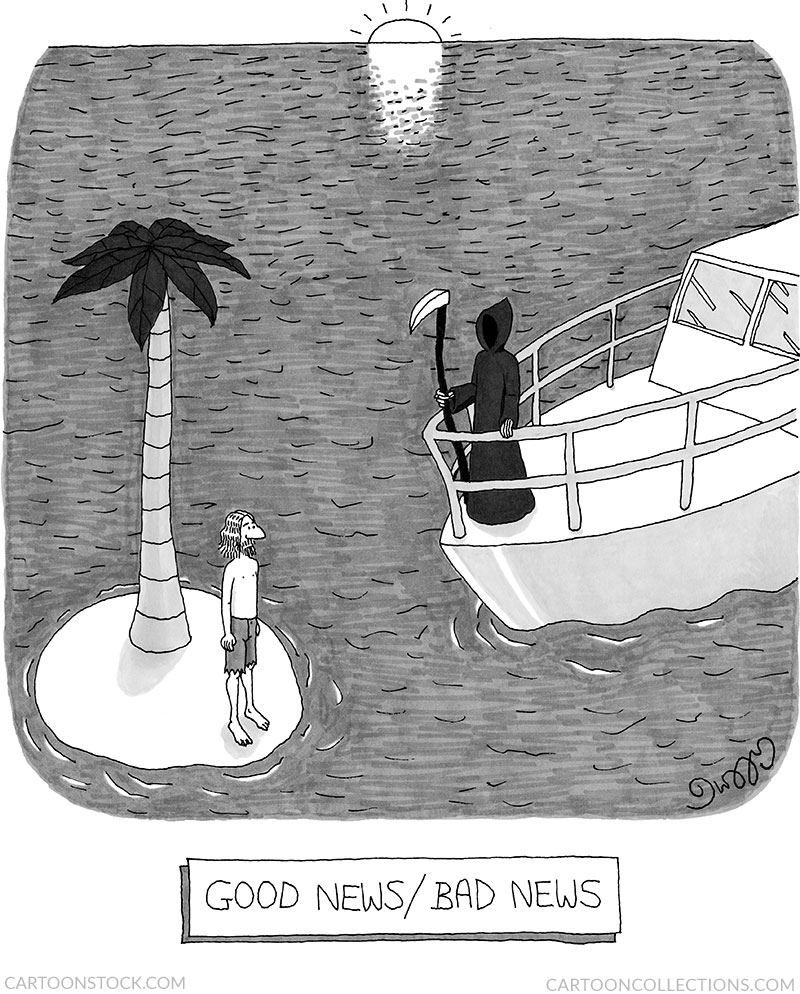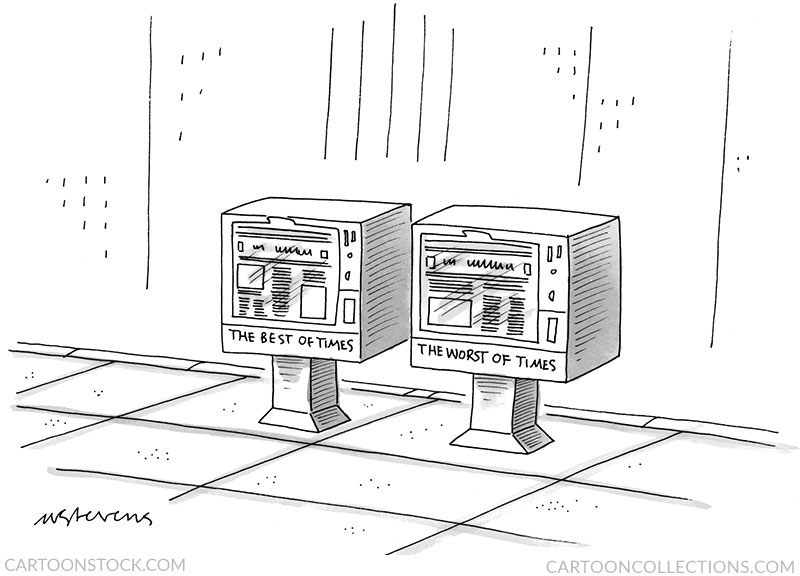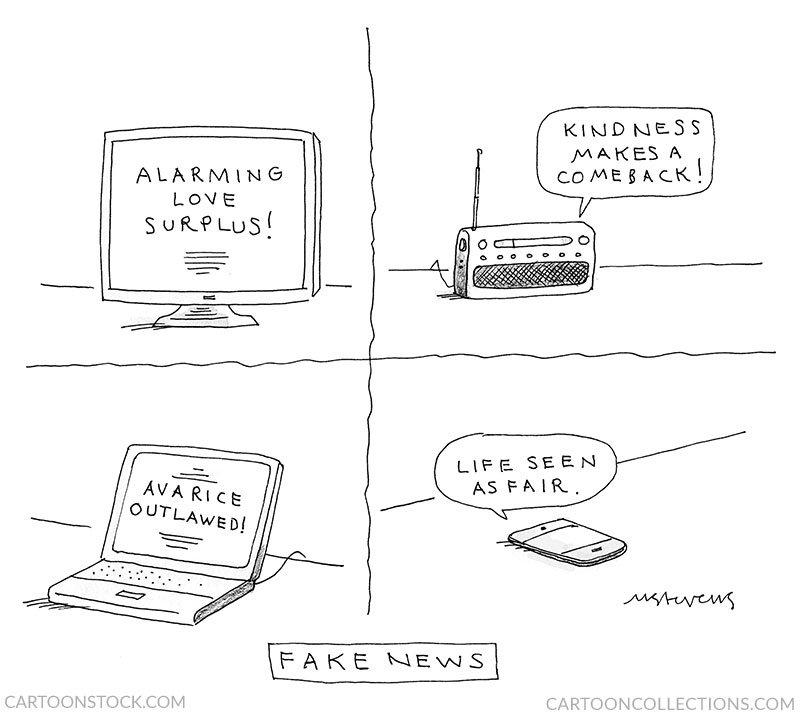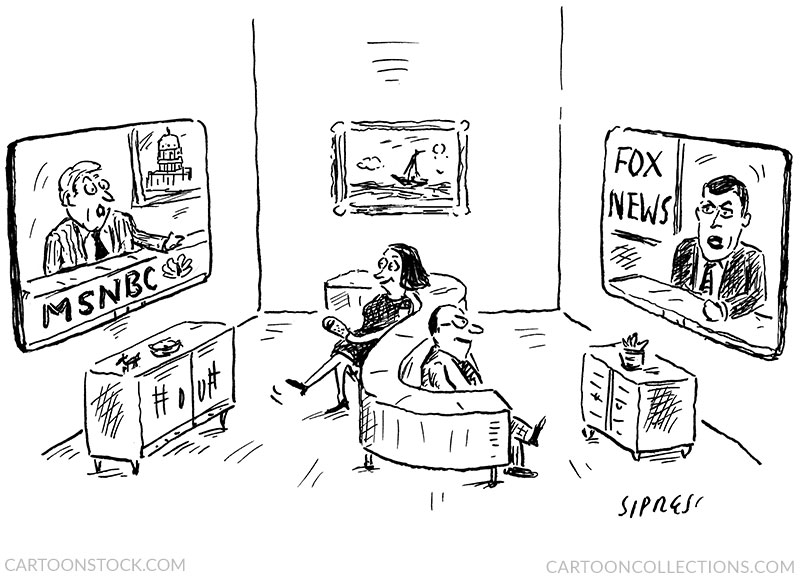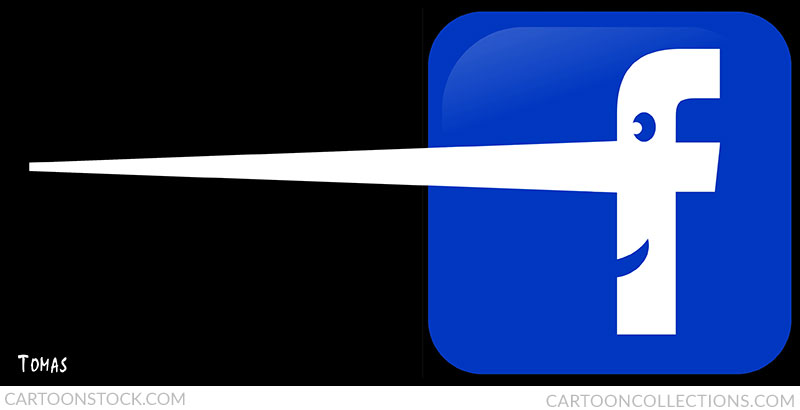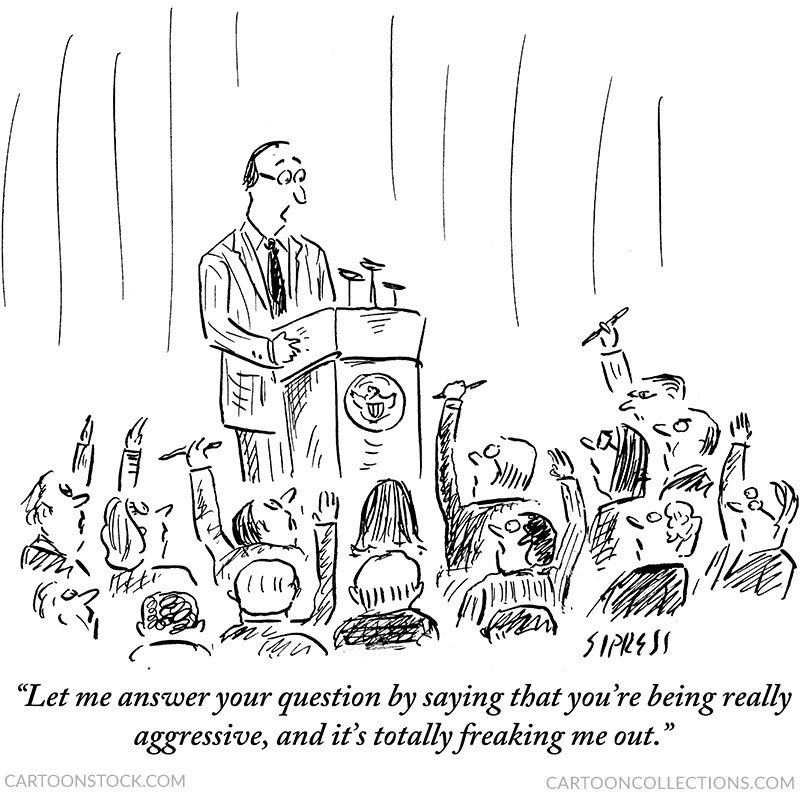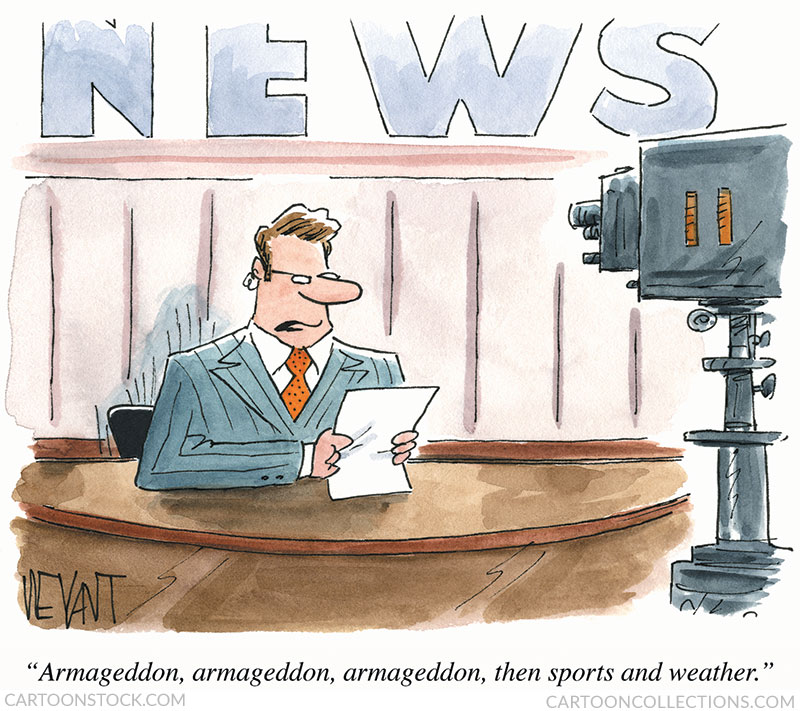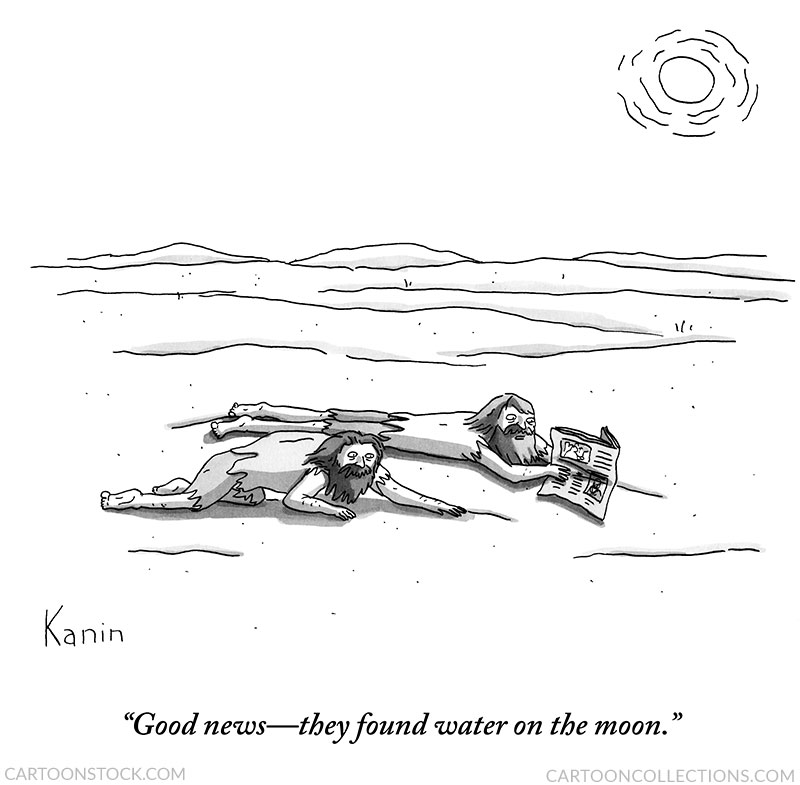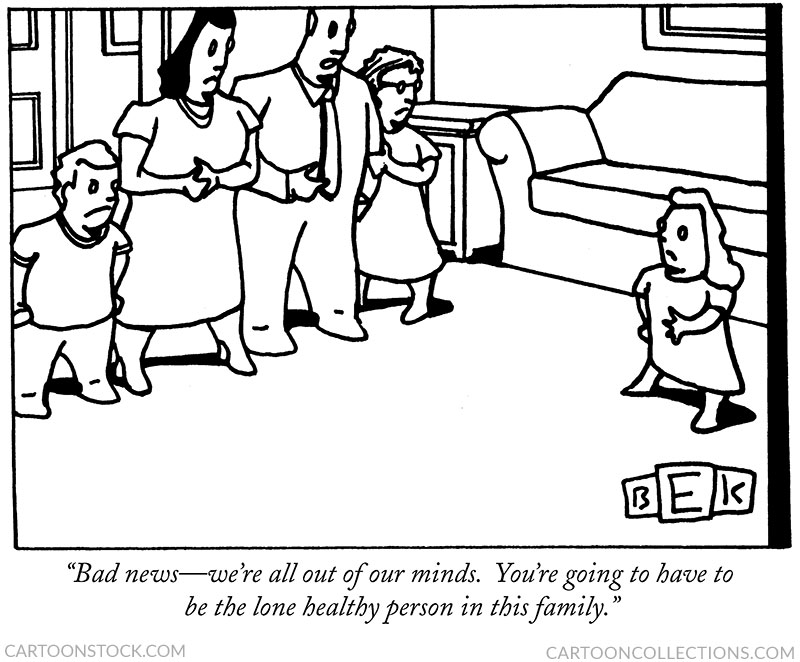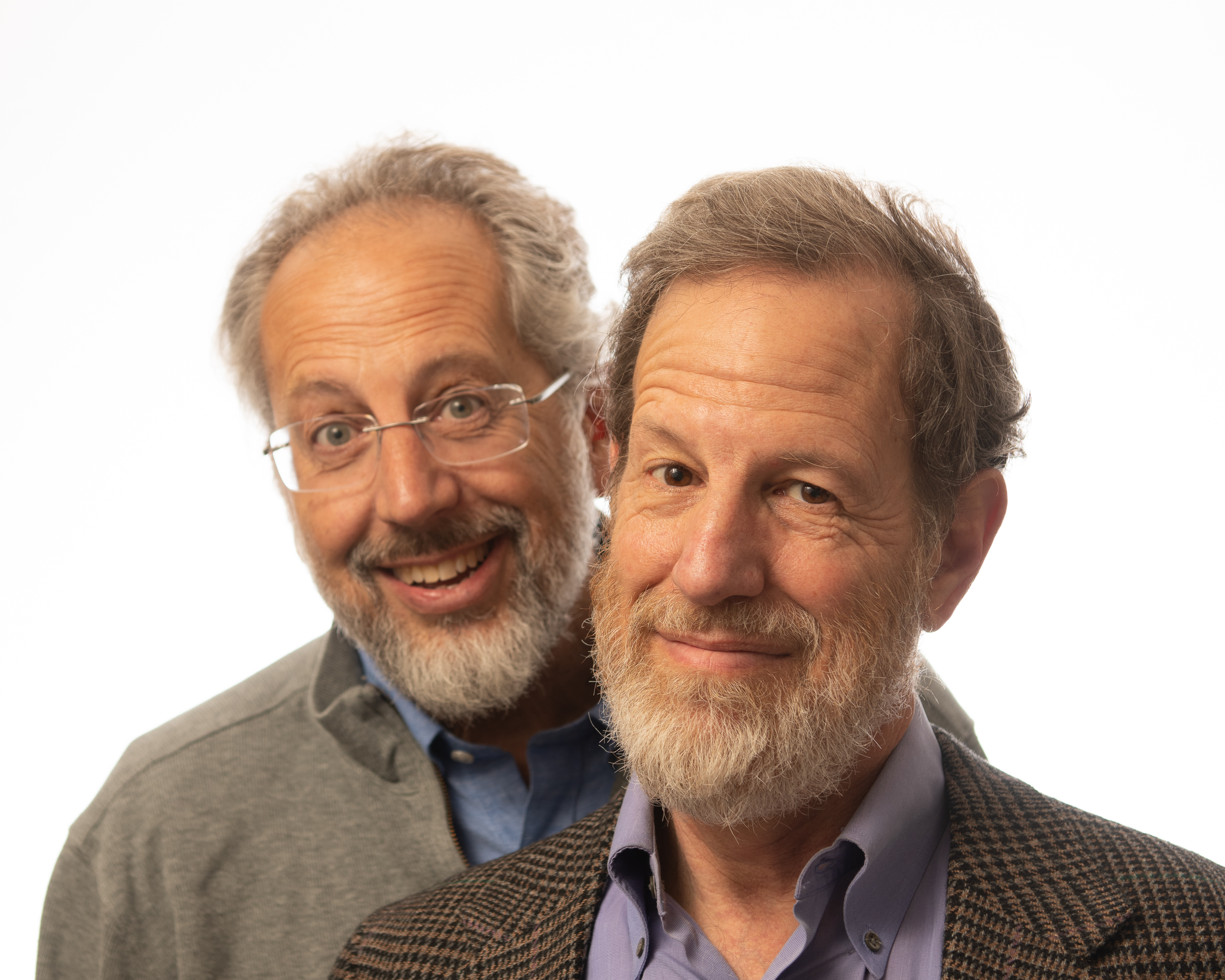 Cartoon critics Phil Witte and Rex Hesner look behind gags to debate what makes a cartoon tick. This week our intrepid critics take a look at THE NEWS.
Cartoon critics Phil Witte and Rex Hesner look behind gags to debate what makes a cartoon tick. This week our intrepid critics take a look at THE NEWS.
The news these days is grim, but here’s a truism: bad news is often good news for cartoonists. An effective cartoon in bad times captures the dismal mood of the country in a way that is more delightful than depressing. A great example is this classic cartoon by George Booth.
BUY THIS CARTOON
Interestingly, it breaks an unwritten rule by repeating a phrase in the caption several times; the repetition underscores the speaker’s helpless anger. He may be old, but he speaks for all generations.
Roz Chast, the queen of anxiety cartoons, illustrates how we react to the news—always bad news, of course—in a five-image cartoon, moving from horror to numbness. It’s an endless cycle, and especially now it’s depressing, true, and funny.
BUY THIS CARTOON
Happy days are definitely not here again, which is why people may feel nostalgic for a simpler time. That yearning for a romanticized era is the subject of a cartoon by Gahan Wilson.
BUY THIS CARTOON
One approach relied on by cartoonists is the good news-bad news setup. Usually the caption describes something positive followed by bad news that obliterates the hopeful message. The challenge is to create variations on that theme. J.C. Duffy’s cartoon manages to combine three cartoon clichés: good news-bad news, the desert island, and approaching Death—a cartoon cliché trifecta! The cartoon uses a heavy dose of irony to subvert our expectations; here is one way the marooned guy didn’t want to leave the island. The setting sun adds a clever graphic commentary.
BUY THIS CARTOON
Another cartoon that could fall into the good news-bad news category is this caption-less gem by Mick Stevens, riffing on A Tale of Two Cities. The “Times” in this case apparently refers to The New York Times, once found in something called newspaper boxes.
BUY THIS CARTOON
Mick Stevens also comments on the proliferation of something that didn’t exist just one presidential administration ago: so-called fake news. To label reports of widespread human decency as false is sadly accurate; yet, the cartoon is done with a light touch, so we can nod and smile at the bitter truth.
BUY THIS CARTOON
Cartoonists also consider the sources of our news and how they influence our perspectives on world events. Combining domestic differences with the ideological divides among T.V. networks in the subject of this David Sipress cartoon, showing one couple living in separate realities.
BUY THIS CARTOON
Television and newspapers, whether print or digital, are two sources of information, but for lively commentary with little concern for accuracy, many folks turn to online, uncurated sources. Why indulge in critical thinking when unsupported opinions dressed up as facts are a click away? Lamberto Tomassini, a cartoonist and designer based in Rome, tweaks a familiar logo to illustrate that point, relying on a reference to a character in an Italian children’s book.
BUY THIS CARTOON
Some mention should be made of the journalists who gather the news. The best ones ask tough questions, and the worst politicians find ways to avoid answering them. At least the pol in this cartoon, another one by David Sipress, is being honest, instead lashing out with petty insults. That honesty is at odds with our expectations, and the mismatch is the source of the humor.
BUY THIS CARTOON
Let’s not forget those talking heads in front of the camera who are prone to highlighting the sensational. The caption in this cartoon by Chris Weyant is comically anticlimactic. Bad news travels not only fast but first.
BUY THIS CARTOON
Not all news in cartoons is bad. Zach Kanin’s cartoon offers some pretty good news, which contrasts with the unfortunate condition of these two desert crawlers. Of course, the setup is common, but the gag surprises through irony. While cartoons require a certain suspicion of disbelief, one might wonder where the speaker found the newspaper.
BUY THIS CARTOON
Bruce Eric Kaplan created this cartoon long before the current health crisis, but it’s timely nonetheless. Social distancing can take many forms.
BUY THIS CARTOON
To our readers we say, stay safe, healthy, and, to the extent possible, sane.


